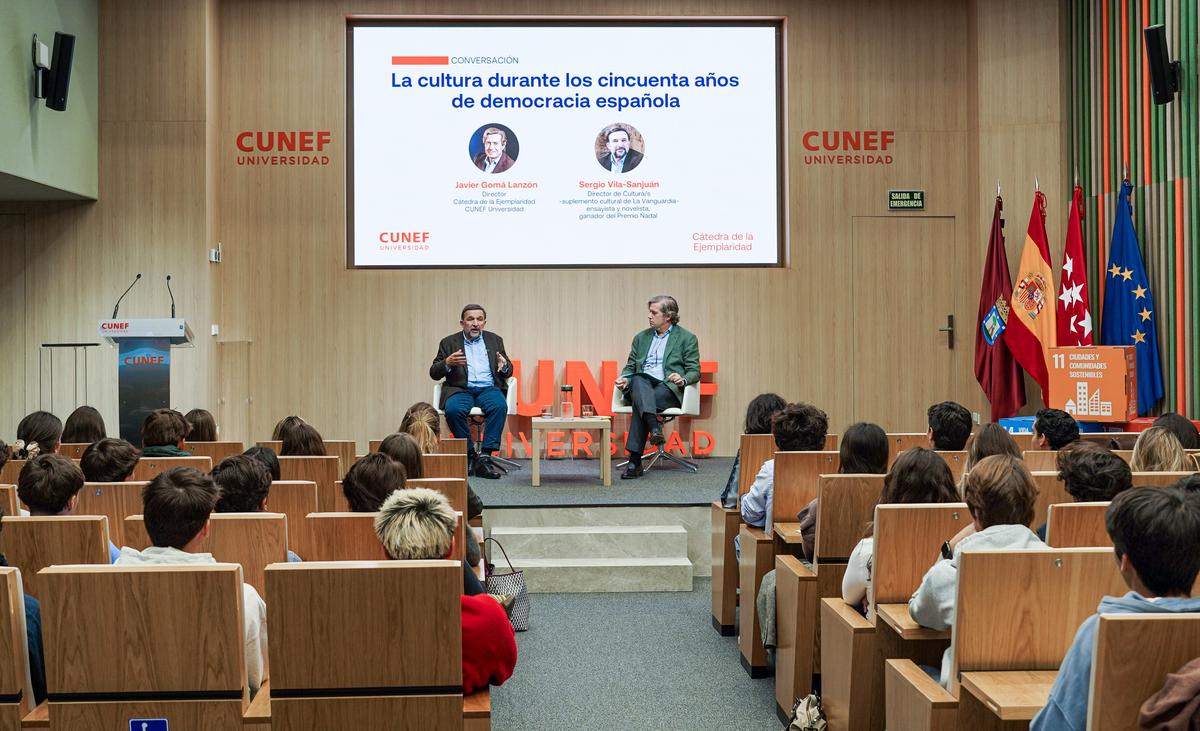
- Home
- The Professorship of Exemplarity organises an event on “Culture during the 50 years of democracy in Spain”

The Professorship of Exemplarity organises an event on “Culture during the 50 years of democracy in Spain”
6 November 2024
Last 6 November, Javier Gomá, Chair of Exemplarity at CUNEF Universidad, and Sergio Vila-Sanjuán, Director of Cultura/s (the weekly cultural supplement of the daily newspaper La Vanguardia), essayist, novelist and winner of the Nadal Prize, discussed “Culture during the 50 years of democracy in Spain” at the Auditorium of the Almansa Campus. They highlighted the following aspects:
- Culture is the field of knowledge that enriches and enhances human beings, helping us understand ourselves and the world we live in. Including cultural tourism, it accounts for circa 6% of Spain’s GDP, providing around 800,000 jobs, and represents our main claim to fame in the eyes of the rest of the world.
- The evolution of culture in democratic Spain can be divided into two major stages: a first phase of contentment and development (1975-2007) and a second one of dissatisfaction and unrest (2007-2020).
- Spain, as a cultural state, is still under construction. Although it has the potential to create a relevant cultural society, it has not yet reached the level of France or Germany, where culture is a central element of the State.
- The cultural middle class appeared in Spain in the 1980s, when opportunities began to arise, a network of foundations was created, ARCO International Contemporary Art Fair was launched, and the publishing sector lived golden years.
- In the years that followed, several Spanish authors published international bestsellers, including Carlos Ruiz Zafón, with The Shadow of the Wind, or Arturo Pérez-Reverte.
- The financial crisis (2007), added to the health crisis (2020), and compounded by industrial, political and cultural creation issues, have weighed upon the last 20 years.
- Currently, Spain is undergoing a certain degree of reconstruction, while it faces the digital revolution, with new formats, influences and methods of cultural expression. It is a time of some perplexity, with many unknown factors, but also multiple opportunities.
- Social media have become key in cultural marketing, giving rise to new influences, such as TikTok for music, Twitter (currently X) for books and Spotify for live music.